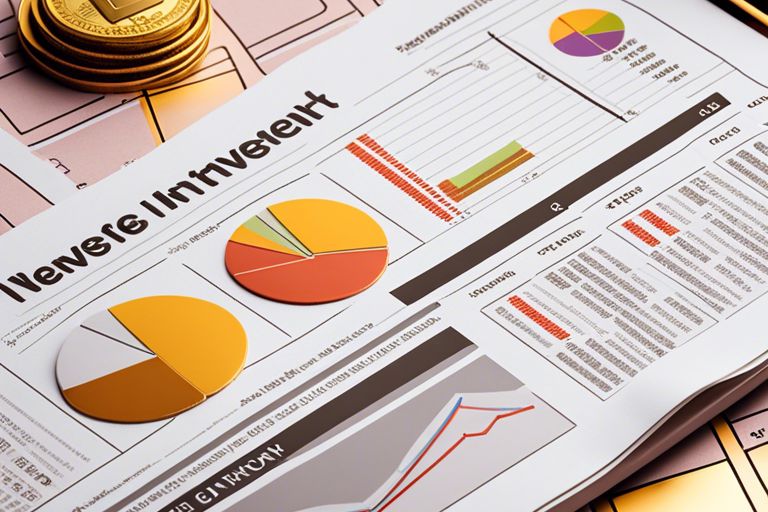Have You Explored High-Yield Income Investments?
High-Yield income investments can offer potential for significant returns; however, they also come with higher risks. It’s crucial to understand the dangers and benefits associated with these investments before diving in. In this informative blog post, we will explore the ins and outs of high-yield income investments and provide you with the knowledge you need to make informed decisions about your financial future.

What Are High-Yield Income Investments?
Definition and Benefits
The world of high-yield income investments is a realm where investors can potentially earn higher returns on their investments compared to traditional options like bonds or savings accounts. These investments can include stocks, bonds, real estate, or peer-to-peer lending platforms. Benefits of high-yield income investments include the potential for higher returns, diversification of investment portfolio, and the opportunity to generate passive income.
Types of High-Yield Investments
An important aspect of high-yield income investments is understanding the different types available in the market. These options include dividend-paying stocks, high-yield bonds, real estate investment trusts (REITs), peer-to-peer lending, and preferred stocks. This diversity allows investors to choose investments that align with their risk tolerance and financial goals.
| Dividend-Paying Stocks | Invest in companies that distribute a portion of their earnings to shareholders as dividends. |
| High-Yield Bonds | Offer higher interest rates but come with increased risk of default. |
| Real Estate Investment Trusts (REITs) | Invest in real estate properties and earn rental income. |
| Peer-to-Peer Lending | Directly lend money to individuals or businesses and earn interest. |
| Preferred Stocks | Offer fixed dividends but rank higher than common stocks in terms of payouts. |
Why You Should Consider High-Yield Income Investments
Clearly, high-yield income investments can offer many benefits to savvy investors. These types of investments can be a valuable addition to your portfolio for several reasons.
Diversifying Your Portfolio
Investments in high-yield income securities can help diversify your portfolio and reduce risk. By spreading your investments across different asset classes, including high-yield bonds or dividend-paying stocks, you can protect your portfolio from significant losses in any one sector.
Boosting Your Income Stream
High-yield income investments can provide you with a reliable source of passive income, which can be particularly appealing during uncertain economic times. These investments often offer higher yields than traditional options like savings accounts or government bonds, allowing you to boost your income stream significantly.
Stream
With high-yield income investments, you have the opportunity to earn substantial returns on your initial investment. While these investments may come with a higher level of risk, the potential for increased income can make them a rewarding addition to your overall investment strategy.

How to Get Started with High-Yield Income Investments
Research and Due Diligence
Started by researching different high-yield income investments such as dividend stocks, bonds, real estate investment trusts (REITs), and peer-to-peer lending platforms. Conduct due diligence by analyzing historical performance, reading company reports, and assessing the risk factors involved.
Setting Investment Goals and Risk Tolerance
With any investment, it’s crucial to align your choices with your financial goals and risk tolerance. Determine if you’re investing for short-term gains or long-term growth. Assess your comfort level with risk and volatility to choose investments that match your profile.
Goals: Are you looking for consistent passive income, capital appreciation, or a combination of both? Consider your timeline for needing the returns and how much risk you can withstand. Keep in mind that while high-yield investments offer the potential for greater returns, they also come with increased risk. It’s crucial to strike a balance that aligns with your financial goals and risk tolerance.
I have written the ‘How to Get Started with High-Yield Income Investments’ chapter for your blog post ‘Have You Explored High-Yield Income Investments?’. Let me know if you need more information or further assistance.

Common Misconceptions and Risks
Debunking Myths About High-Yield Investments
Despite common beliefs, high-yield investments are not always too good to be true. While they offer the potential for greater returns, they also come with increased risks that need to be carefully managed.
Managing Risk and Avoiding Pitfalls
Myths surrounding high-yield investments often lead investors to overlook the importance of diversification and due diligence. To safeguard your investment portfolio, it is crucial to thoroughly research any potential opportunities, understand the underlying risks, and consider seeking advice from financial professionals.
Final Words
Ultimately, exploring high-yield income investments is a smart financial decision for those looking to maximize their returns. By diversifying your portfolio with these options, you can potentially increase your passive income streams and secure a more stable financial future. Remember to always conduct thorough research and seek advice from a financial advisor before making any investment decisions.
FAQ
Q: What are high-yield income investments?
A: High-yield income investments are investment vehicles that offer a higher return in the form of interest or dividends compared to traditional investment options such as savings accounts or government bonds.
Q: Why should I consider high-yield income investments?
A: High-yield income investments can provide a steady stream of income, diversify your investment portfolio, and potentially offer higher returns than other types of investments.
Q: What are some examples of high-yield income investments?
A: Examples of high-yield income investments include high-dividend stocks, corporate bonds, real estate investment trusts (REITs), peer-to-peer lending platforms, and preferred stocks.
Q: What are the risks associated with high-yield income investments?
A: High-yield income investments come with risks such as credit risk, interest rate risk, liquidity risk, and market risk. It’s important to carefully evaluate these risks before investing.
Q: How can I evaluate the reliability of high-yield income investments?
A: To evaluate the reliability of high-yield income investments, look at the issuer’s credit rating, track record, financial health, and the current economic environment. Conduct thorough research or consult with a financial advisor.
Q: Are high-yield income investments suitable for everyone?
A: High-yield income investments may not be suitable for everyone, especially those who are risk-averse or have a short investment horizon. It’s important to assess your risk tolerance and investment goals before investing.
Q: Where can I learn more about high-yield income investments?
A: You can learn more about high-yield income investments by reading financial publications, attending seminars, consulting with a financial advisor, or accessing online resources from reputable financial institutions.
![]()













